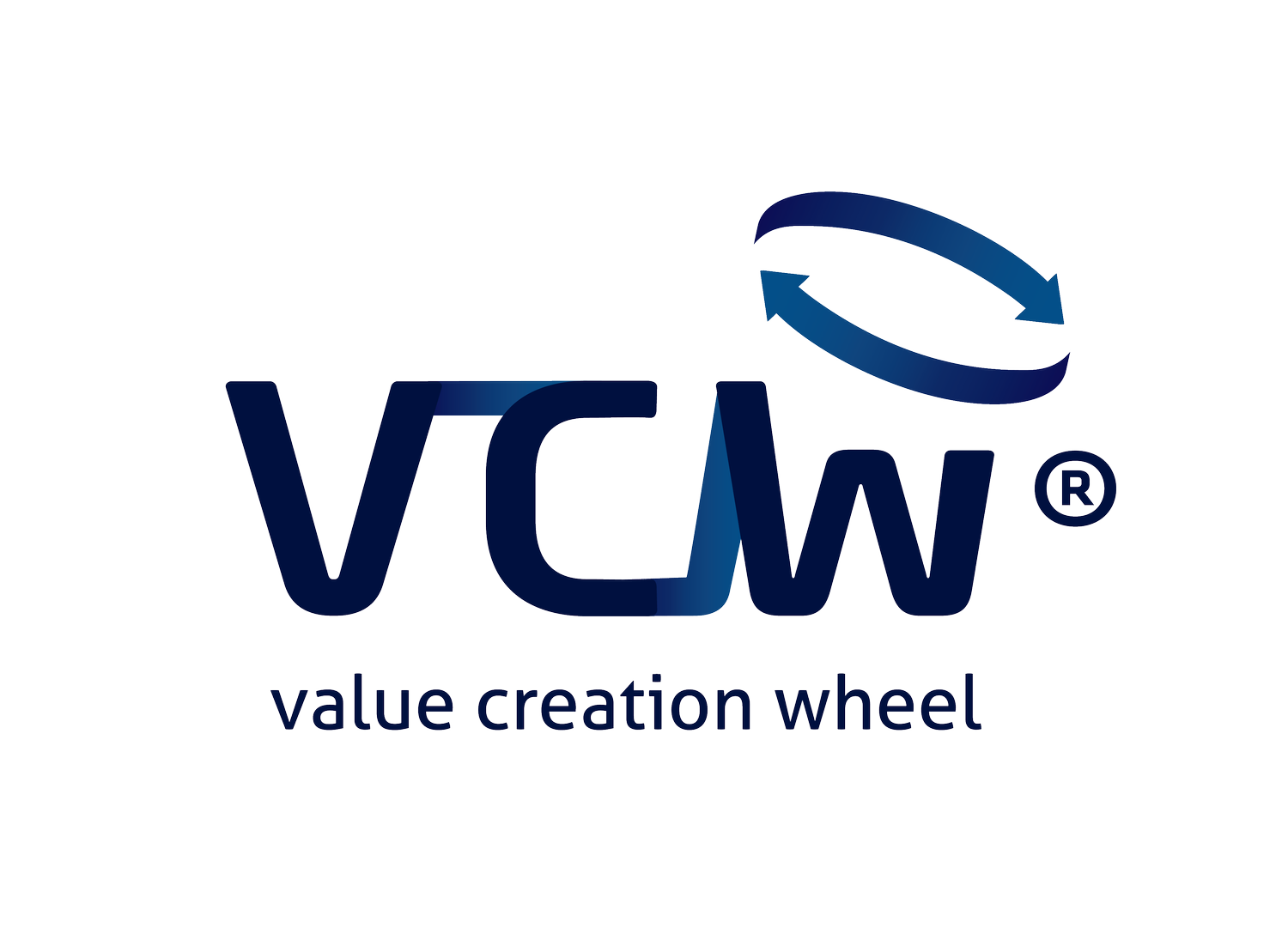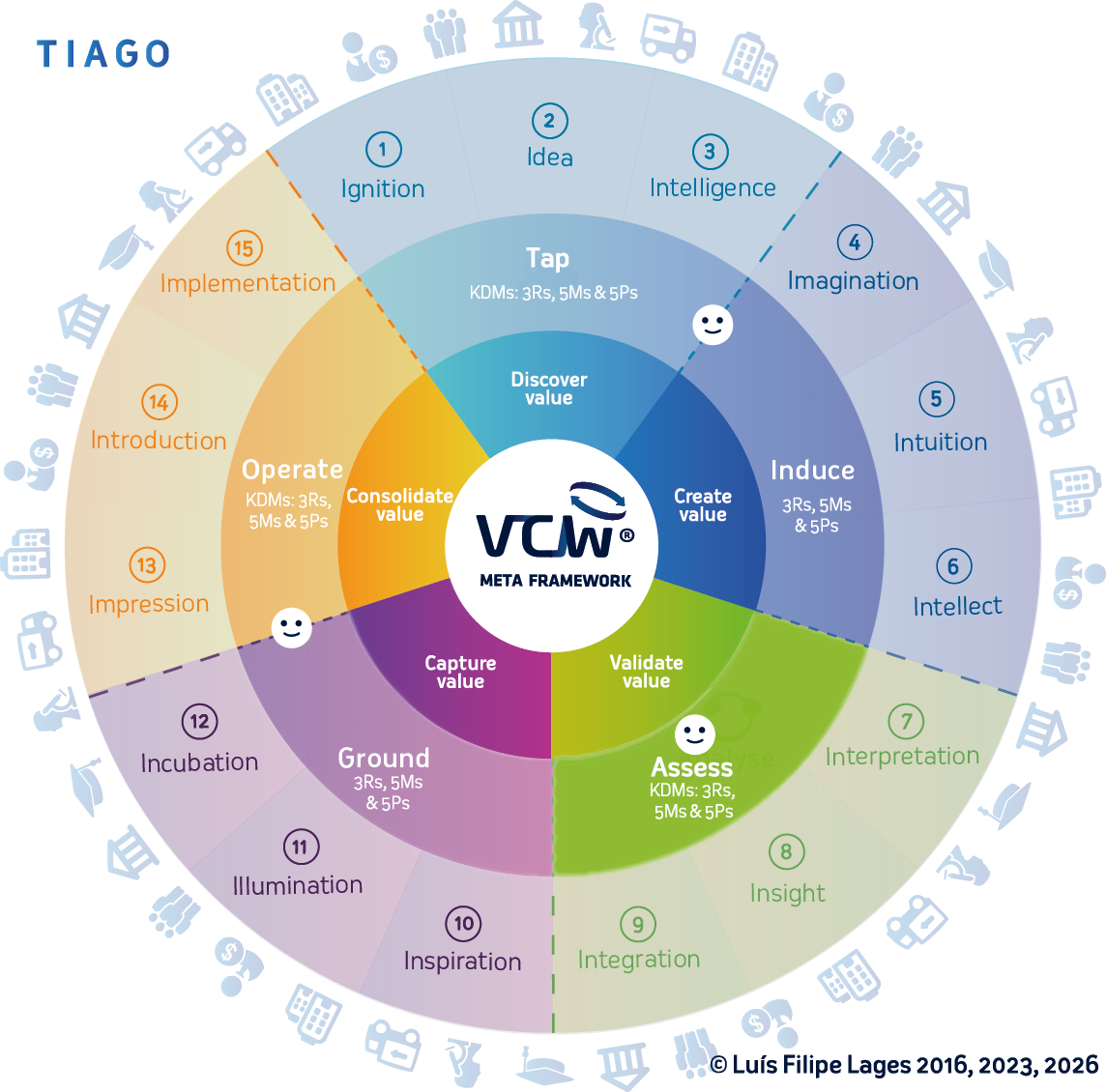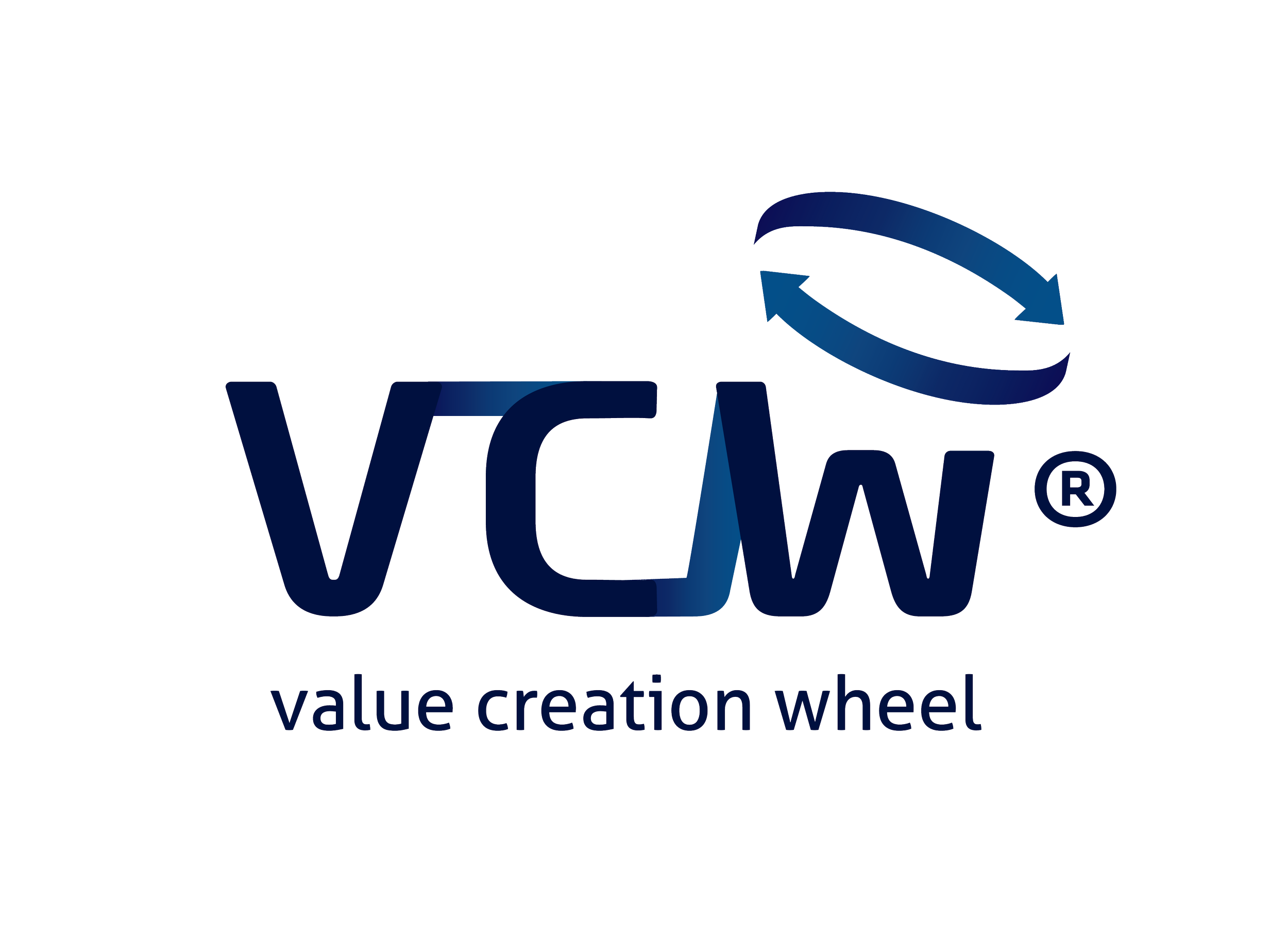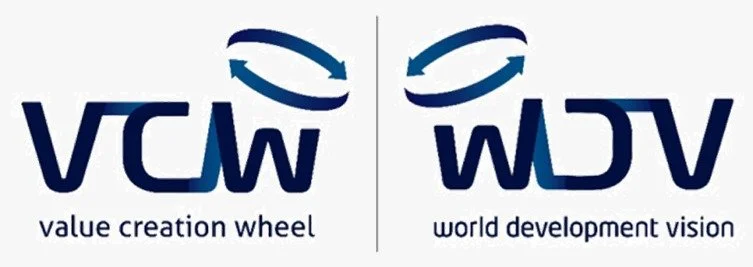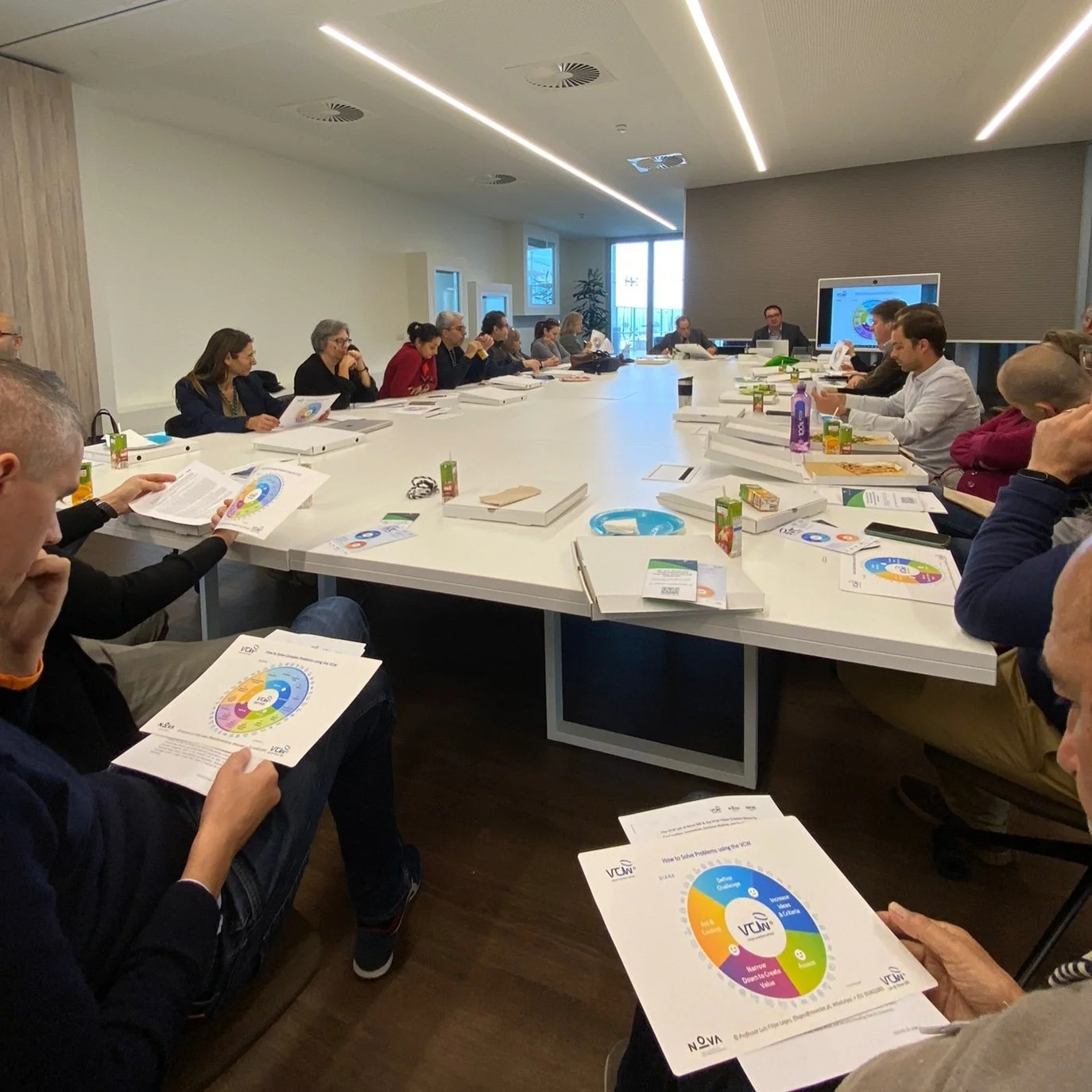
What is the Value Creation Wheel?
VCW Sprint
The VCW is an innovation and decision-making method which helps Key Decision Makers (KDMs) and people supporting them to find solutions for their challenges in an effective and efficient manner.
It has four different frameworks that can be adapted to your specific needs.
The VCW Frameworks
VCW Journey
VCW Method
-
A fast approach to decision making
A VCW Sprint consists in the application of a very reduced number of tools from the VCW Method. It can be applied in situations which require fast solutions with very limited resources.
-
A fast approach to effective and efficient decision making
A VCW Journey consists in the application of a selected number of tools from the VCW Method. It is often applied in workshops involving a significant degree of co-creation.
-
An effective and efficient method to support in-depth projects
The VCW Method is frequently used to solve complex challenges which require the full support of Key Decision Makers while engaging the surrounding internal and external stakeholders. It provides a holistic approach to problem-solving by incorporating a wide range of methods and managerial tools.
It is typically applied in educational, research and consultancy projects.
-
An in-depth customized framework to support long and complex projects
The VCW Meta Framework allows for the integration of a wide range of information systems (i.e., the combination of software, hardware, and telecommunication networks to collect data) as well as established tools, methods, and theories.
This Meta Framework appears as a chameleon framework, completely customized to each specific case and problem. It is capable of complementing, be integrated and/or integrating existing frameworks, models and tools across different fields.
It might be used in very long teaching programs, consultancy and research projects. The resources (e.g., 4Ms- Manpower, Minute, Money and Motivation) for this type of projects are often quite large, involve numerous stakeholders, last some years, and have budgets of several €millions.
VCW Meta Framework
When to use the VCW?
The VCW should be applied by Key Decision Makers (KDMs) who are looking for supported and convincing solutions to solve their challenges and problems. They might apply the VCW to address challenges initiated by HOW, WHAT, WHICH, WHERE, and WHO.
By the end of the VCW process it becomes possible to answer questions which require deep critical thinking skills. The VCW process will help KDMs to identify solutions and criteria to answer their questions as well as to identify the reasons for selecting some options versus others. Moreover, it will help to support the implementation of the final solution(s).
When not to use the VCW?
The VCW should not be used when the KDMs:
are not committed to the challenge/problem and VCW process,
have no power or access to resources (e.g., 3Ms-manpower, money and minutes),
do not believe in co-creation and innovation for decision making and problem-solving.
What’s the definition of Value Creation in the VCW?
The VCW defines Value Creation as the increase in the net benefits received by Key Decision Makers (KDMs) and their stakeholders when solving a problem, resulting from summing all the benefits minus the required costs/resources (e.g., 3Ms- manpower, money and minutes).
What is a Key Decision Maker?
The Key Decision Maker (KDM) is an individual (or a group of people) who is committed and has the power to solve a challenge/problem at the organizational or individual level and has access to critical resources (e.g., the 3Ms- manpower, money and minutes) to do so.
The KDMs are committed to solving the challenge/problem. In the VCW process, KDMs have the final word in deciding the initial challenge and KPIs (Phase 1- Define), selecting the main ideas and criteria (Phase 3- Assess), and validating the implementation and monitoring achieved KPIs (Phase 5- Act).
Five Supporting Pillars of the VCW for a Better World
SUSTAINABILITY: Balance between short- and long-term goals, and alignment with a sustainable vision (e.g., 17 SDGs indicators, European Green Deal, Paris Agreement);
COMMON GOOD: Fairness and justice for all internal and external stakeholders;
COLLABORATION: Openness to collective intelligence and co-creation to find the best solution(s) (e.g., by engaging different stakeholders, angels’ and devils’ advocates);
WISDOM: Proper analysis and judgement of problems and paradoxes (e.g., how to manage global vs. local perspectives, structure vs. agility, value creation vs cutting costs);
TRANSPARENCY: About a) the decision-making process, b) ideas and criteria supporting the final solutions, c) the critical decision makers, d) internal and external forces.
VCW Moments
